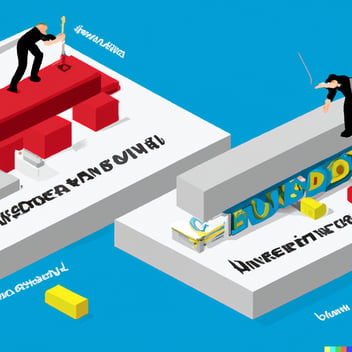I find myself at the intersection of strategy, innovation, and customer experience a lot. The business design discipline has never been more vital as organizations today grapple with disruptive trends and rapidly evolving customer expectations. In this post, I will delve into the critical reasons behind the growing need for business design and share real-world examples of how it has delivered value.
- Customer-Centric Innovation
Reason: In today's market, customer needs and preferences change rapidly, and organizations need to keep pace. Business Design puts the customer at the center of the innovation process, ensuring that new products, services, or business models are tailored to meet customer needs and deliver exceptional experiences.
Example: A mobile app company used business design principles to revamp their product. The process began with in-depth user research to understand their customer's pain points and desires. The insights gained informed the redesign of the app, ensuring it resonated with users and stood out in the crowded app market.
- Cross-Functional Collaboration
Reason: Siloed teams and disjointed processes can hamper innovation and efficiency. Business design fosters cross-functional collaboration, breaking down silos and enabling teams to work together effectively to achieve common objectives.
Example: An automobile manufacturer was struggling with delays and cost overruns in their new product development process. By employing business design, they restructured their process to facilitate better collaboration between design, engineering, marketing, and manufacturing teams, significantly improving efficiency and product launch timelines.
- Strategic Alignment
Reason: Strategic alignment is crucial to ensure that all parts of an organization work towards a common goal. Business designers play a pivotal role in aligning strategy with operations, ensuring that tactical activities support strategic objectives.
Example: A consumer goods company planning to shift towards sustainable practices leveraged business design to align its strategy across the organization. The business designer helped translate the strategic vision into actionable plans for each department, ensuring a cohesive approach to sustainability.
- Business Model Innovation
Reason: As markets evolve, businesses may need to rethink their business models to stay competitive. Business design can help organizations innovate their business models, creating new ways to deliver value to customers and capture value for the organization.
Example: A traditional publishing house, faced with declining print sales, used business design to innovate its business model. They transitioned to a digital subscription model, offering readers access to an extensive online library. This approach not only provided a new revenue stream but also catered to the increasing consumer preference for digital content.
The demand for business design is a testament to the discipline's ability to drive innovation, foster collaboration, align strategy and operations, and reinvent business models. As markets continue to evolve and customer expectations rise, business design will be crucial for organizations seeking to stay competitive and relevant. With its human-centric, collaborative, and strategic approach, business design has the potential to shape the future of business.




